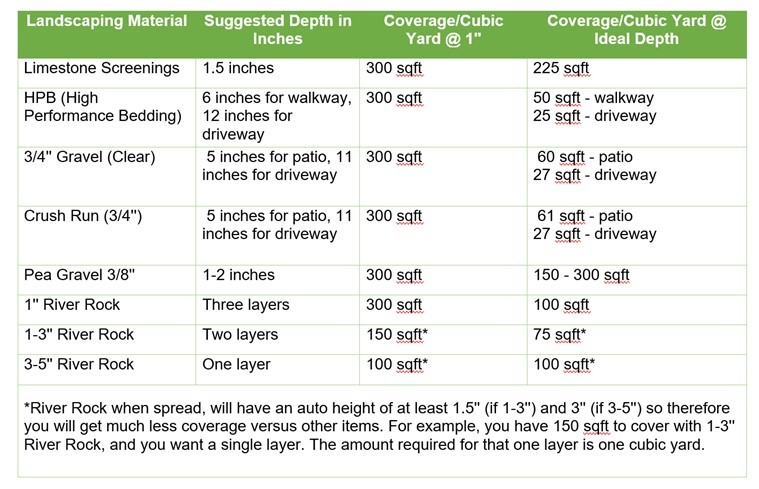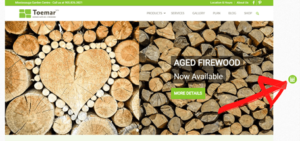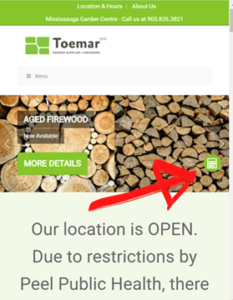Landscaping rock emerged a winner of the 2020 and 2021 landscaping scene. And no wonder, from natural stone and river rocks, to pea gravel and bedding, landscaping rock looks gorgeous and provides a quick lift to a tired yard, not to mention creates the right stable foundation for your landscaping and hardscaping projects.
How to Calculate How Much Rock I Need in Cubic Yards
There are several formulas you can use, but the one Toemar recommends is the easiest and most accurate.
It’s important to know how much you need, because too little means going through the whole process twice, and too much is difficult because most landscaping rock can’t be refunded, not to mention the hassle of getting it back to the store.
You know the saying, ‘measure twice, cut once’? For landscaping supplies, we say, ‘measure twice, order once!’
First determine the area and depth you need to cover. Know the length and width in feet and the height in inches, then apply this formula:
(Length (ft) * Width (ft) * (Depth (inches) / 12)) / 27
For example, if the section of yard you want to cover in gravel is 4ft long, 6ft wide, and 12 inches deep, it would look like this:
(4 x 6 x (12 / 12)) / 27 = 24 / 27 = 0.88 cubic yards
How much does one cubic yard of landscaping rock cover?
Use this handy chart to determine how many bulk bags of material you will need to order:

Toemar’s Bulk Sand Rock and Limestone Calculator
Simply input your measurements into Toemar’s landscaping materials calculator and let us do the math for you. The calculator is located on Toemar’s homepage. If you’re using your laptop or desktop, you’ll see the green calculator icon to the right of the screen. If you’re using your mobile, you’ll see the green calculator icon overlaying the main picture…
Use this landscaping calculator for stone, sand, soil and mulch on your laptop/desktop:

Mobile version of Toemar’s landscaping calculator:

Work with Toemar for Your Landscaping Needs
Choosing the right amounts of landscaping rock and other materials for your project can get confusing even for the most experienced landscapers. That’s why the Toemar team works closely with both landscapers, hardscapers and homeowners to make sure they get exactly what they need in the right quantity.
If you ever have a question or concern, simply drop us a line at 905-826-3821.
What do You Lay Under Landscaping Rock?
Sometimes using landscaping rock in your project is a necessity, like limestone screening for pavers, but other times, landscape rock is used to create a beautiful, low maintenance environment for homeowners.
But for that low-maintenance benefit to last, it’s important to create a barrier between the rocks and soil that will prevent weeds from cropping up.
Landscape fabric creates an intentional weed barrier that encourages root growth beneath it because air, water and nutrients can still flow into the soil beneath.
Toemar’s weed barrier come with a 20-year guarantee, or you can use a heavy duty filter cloth type (usually this would be the best choice to line retaining walls, etc.)
How to Install a Weed Barrier Beneath Landscaping Rocks
1. Measure out how much landscaping fabric you will need by calculating the area and order.
2. Remove sod, plants, etc. and level the area as much as you can. If the space you where you are adding the rocks abuts your home’s foundation, make sure to add a slight gradient that will carry rainwater and snowmelt AWAY from your foundation.
3. Choosing a dry day, lay the landscaping fabric where you want it, and use heavy stone to secure it along the edges, so it doesn’t shift when you cover it with the landscaping stone. Make sure edges overlap any curbs or edging because it will sink down a bit when covered with stone.
4. Cover the space in your landscaping rock.
5. Trim the fabric to fall around anything coming out of the ground like pipes, etc.
Check out this video on how to what to lay beneath your landscaping rocks…
The other option is not to create that barrier, but unless you’re using many inches of material, chances are, you’ll see green weeds poking through your material within a year or two. Some people prefer this, and we support that, but it’s important to know the likely outcome of using vs not using landscape fabric underneath your rock.
In our experience, the vast majority of landscaping and hardscaping professionals use landscaping fabric as a matter of course, and this is not an area where you’ll want to cut corners.
For more information on ordering your bulk landscaping rock, visit us at www.toemar.ca or drop us a line.
How to Use Landscaping Rock in Your Yard
Outdoor Space
Landscaping rock of any kind will create the perfect ambiance for your patio or outdoor sitting space. Our favourite is to see uniform pathways extending from the central outdoor sitting/living space to various points in the yard. It creates a sense of continuity and expands the feel of the stone – whether it be sleek or more modern in design – throughout the yard, achieving a cohesive and coordinated feel to the space.
Water Features
Use landscaping rock around hot tubs, patios and pools. Smooth cut natural stone pavers go well with almost any landscape and create an instant environment of sleek modernity.
With clever contemporary designs, smooth cut pavers can be extended on pathways, retaining walls and even around sitting areas. For natural designs, large natural boulders can double as sitting areas and create gorgeous focal points for the yard, particularly if placed near waterfalls.
Water Gardens
The idea of a water garden may inspire memories of the rugged and wild fairy pools of Connemara or the graceful and elegant sun-gilded still water of a Japanese lily pond. Careful use of natural stone and water can create a water feature that captures the imagination and creates a brag-worthy oasis of calm in your backyard.
We have seen homeowners use natural stone to create water features within their pool (for example, a natural stone waterfall) or to create a stunning and natural landscape around a pool or hot tub, and even a few brave souls who simply wanted to recreate a truly stand-alone water garden on their property.
It’s worth mentioning koi ponds in this section and we offer a word of warning:
We live in Mississauga. If you plan to build a pond and invest in both koi and a winter warmth system, make sure you have a strong protection barrier that even the wiliest of raccoons can’t displace.
Be diligent! Mississauga’s most determined citizens have a relentless appetite for koi, but forewarned is forearmed.
Patio Space
There are two ways you may want to use landscaping stone in your patio project. The first is pavers. Natural stone pavers can create a striking and modern look for your yard. Having said that, it’s more natural looking than old-fashioned interlocking stone and the colours and textures blend in more seamlessly with your garden and tree-scape.
The trick to natural stone pavers is professional installation. Because they tend to be larger and flatter than traditional interlocking brick, you need to make sure your foundation is perfectly level. Uneven pavers due to levelling will stand out and interrupt the entire impression of your yard. Unless you’re a professional hardscaper or landscaper, this is not a simple DIY weekend project.
The other way to use landscaping stone in your patio design is by investing in large natural boulders as accent pieces. If you do place a few boulders on your patio, remember to place them elsewhere in your yard as well to extend the feel of your patio space and create some continuity and flow.
What Kind of Rock Can I Use Instead of Pavers?
Everyone loves pavers because they tend to be affordable, durable and can usually be installed in a day or two (ideally by a professional – read above!)
But there are so many kinds of landscaping rock out there, that there’s no need to be tied to just one.
Lockdown 2020 brought about some big trends for 2021, in particular, creativity around what kind of landscaping rock homeowners and landscapers are using in their landscape designs.
Gone are the days (the 1990s!) when interlocking pavers in geometric designs were the start and end of modern landscaping. Today landscapers take their cues from the natural landscape and mix materials, elevations and plant life to create oases that feel natural and blend into their environments.
We’ve listed a few ideas to get your imagination flowing…
River Rock: Is River Rock Good For Landscaping?
We had a client ask this the other day, and 35 minutes later, when we couldn’t stop talking about river rock, you might think they regretted asking the question, but not so – they were totally on board! River rock is, for all intents and purposes, FABULOUS.
Starting around 2016, river rock became a big deal in landscaping circles. River rocks are easy and versatile to incorporate into most landscape designs. Particularly when used as edging or to create lightly trod pathways that meander around front-yard gardens.
River rocks are a good option with children because they lack sharp edges. Come summertime, no matter how many times we ask our kids to wear sandals, bare feet rule.
Sometimes, it’s better to let your six-year-old feel the sun-warmed-river rock on the soles of their feet while they eat a popsicle; it’s the Mississauga way.
We also have several clients who have replaced their mulch with a few inches of river rock (six, to be exact) to deter determined dogs from digging. This solution not only helps their garden but can also protect the dogs as not all varieties of mulch are pet friendly.
River rock comes in three sizes at Toemar:
1″ River Rock
https://gardenbag.ca/collections/all/products/river-rock-1

1″-3″ River Rock
https://gardenbag.ca/collections/all/products/river-rock-1-3

4’-8” River Rocks
https://gardenbag.ca/collections/all/products/river-rock-4-8

Pea Gravel: Where Should I Use Pea Gravel?
Pea gravel is a popular option for everything from walkways and borders to your basement window well.
It’s smooth on tender feet and satisfies both style and function. Pea gravel can be used (carefully) in lieu of mulch because it’s quite light yet serves as an appropriate driveway material while creating a natural and beautiful focal point.
https://gardenbag.ca/collections/gravel-1/products/pea-gravel
As an aside, many of our clients ask (seriously):
Will my dog poop on gravel?
We’re dog people too, so we’ve got an answer to this common question.
Regular gravel can hurt your puppy’s paws, but pea gravel is rounded so it’s the perfect place for your pooch to… errrr…poop, but make sure your dog isn’t more interested in playing with the pea gravel than doing its business.
Bottom line? Each dog is different, but if it can work for your puppy, it’ll work for you too.
Flagstones: Are Flagstones Expensive?
Flagstones cost more than the average interlocking paver, but over time, the investment is worth it.
Flagstone provides a beautiful and durable surface that will survive decades. Versatility is key, because flagstone can be cut smooth and sleek – square cut, which is easier to install – or more rugged and natural looking.
Colours tend to lean towards natural browns, grays, blues and blacks; perfect for patios, pathways and porches.
The cost of flagstone is quickly justified by a few factors:
- Unique Design (they look gorgeous)
- Durability (decades!)
- Easy Maintenance (seal and be done with it… for YEARS)
- Permeability (because rain is meant to be absorbed by land, not washed onto your neighbours’ foundation)
Can you get landscaping rock or pavers delivered?
Absolutely! There are a few ways to arrange deliver with Toemar or Toemar’s bulk material branch, Gardenbag.
For landscaping rock:
If you order your landscaping rock through Gardenbag.ca, and by the square yard, depending on where you live, we will either deliver your garden bag of material for free or charge a flat fee for delivery.
Simply make sure to check our delivery areas before you order, and if you’re still not sure, send us a note via email or Facebook and we’ll respond quickly.
If you’re a landscaper, you may need more than a few yards of product. Give us a call at 905.826.3821 and we can arrange a bulk delivery (via dump truck) to wherever you need that material. This costs a bit more, but when you’re on the job, time is money, and we’re happy to save you that time by bringing your materials to you.
For pavers:
In 2020, Toemar launched its online shop which provides a quick and easy way to order your natural stone pavers. Simply visit https://shop.toemar.ca/collections/pavers to browse the collection.
We also stock all these materials on our lot at 1005 Eglinton Ave. W (Eglinton & Terry Fox) in Mississauga should you wish to see them in person, but definitely check local covid lockdown measures before you come.
Most of the time, Toemar can deliver your pavers within 3-5 business days. Feel free to drop us a line for more information. We’d be happy to help you with all your landscaping projects!

